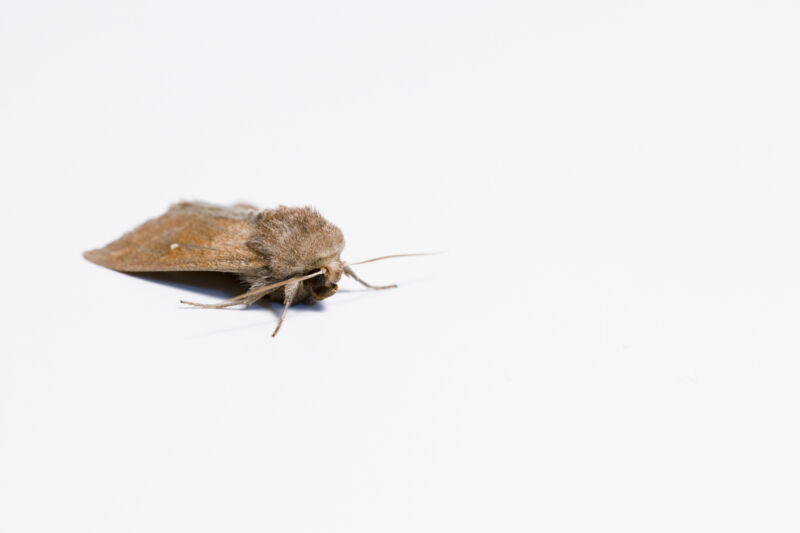We're currently watching—often in horror—what happens as a virus and its hosts engage in an evolutionary arms race. Measures to limit infectivity and enhance immunity are selecting for viral strains that spread more readily and avoid at least some of the immune response. All of that is easily explained through evolutionary theory and has been modeled mathematically.
But not all evolutionary interactions are so neat and binary. Thursday's edition of Science included a description of a three-way fight between butterflies, the wasps that parasitize them, and the viruses that can infect both species. To call the interactions that have ensued "complicated" is a significant understatement.
Meet the combatants
One of the groups involved is the Lepidoptera, the butterflies and moths. They are seemingly the victims in this story because, like any other species, they can be infected by viruses. Many of these viral infections can be fatal, although some kill the animal quickly, and others take their time. Since they often strike during the larval/caterpillar stages, the viruses need other hosts to transfer the viruses to other victims.
Some of the species that perform this transport service are parasitic wasps, which have their own designs on the butterflies. The wasps lay eggs on caterpillars, and the larvae that emerge simply start eating the caterpillar while it's still alive.
This situation sets up some complicated competitions. For example, some viruses may depend on the wasp to spread to new hosts but, once there, start competing with the wasps for the cells of the hapless caterpillar. The caterpillars are not entirely defenseless, though, and some are able to mount an immune response to the virus. Some strains also appear to be able to resist the invasion by wasp larvae. However, viruses often encode proteins that tamp down on the immune response to their benefit, which would also benefit their competition for cells.
Battlefield DNA
The recently published work started with the observation that a wasp species could parasitize a specific Lepidopteran, but that action was blocked if the caterpillars were also infected by a particular virus. This virus gets into the caterpillars when they eat leaves it's on, so it doesn't rely on wasps for transmission. Blocking wasp activity doesn't cost the virus anything and saves more of the victim for itself.
However, the virus did kill the hosts and was not able to block every parasitic wasp.
The researchers found that the susceptible wasp larvae were actually killed. Or rather, something from the caterpillar induced the cells of the wasp larvae to commit an orderly form of suicide, called apoptosis. In any case, the research team was able to show that the killing was done by a factor that was dissolved in the internal fluids of the caterpillar.
That factor was eventually found to be a protein that was termed "parasitoid killing factor," or PKF. The researchers obtained some of the protein's amino acid sequence, which allowed them to identify the gene that encoded it in the virus's genome.
A scan of viral genomes found that several that infect butterflies carry similar genes, with a few viruses carrying more than one gene. But PKF genes weren't limited to viruses. Instead, a lot of Lepidopteran species also carried them, with some species carrying multiple versions. The features of these genes suggested that they had been picked up from the viruses through an accidental transfer of the DNA. (It's also possible that some viruses picked the genes back up from their hosts.)
A multi-way competition
Unsurprisingly, tests found that the targeted wasps had a complicated spectrum of responses. For some PKF/wasp species combinations, the larvae died. In others, development slowed or stopped. In still other combinations, the PKF did not affect larval survival.
In at least one case, a wasp carried a virus that doesn't infect caterpillars by eating—instead, it seems to rely on the wasp to transfer it. Of course, the wasp is immune to its PKF. But that PKF does interfere with the development of wasp species that might compete for caterpillars. At the same time, the virus competes for the caterpillar with the wasp that carries it. And related Lepidopteran species undoubtedly carry PKFs that keep the wasp from successfully parasitizing them.
None of this is static. While the researchers describe a complicated picture at a point in time, the changes in host range, transfer of genes, and diversification of the PKF gene family will all continue in the future. If someone checks in on things in a half-million years, the situation may be even more complex than it is now.
Science, 2021. DOI: 10.1126/science.abb6396 (About DOIs).



3175x175(CURRENT).thumb.jpg.b05acc060982b36f5891ba728e6d953c.jpg)

Recommended Comments
There are no comments to display.
Join the conversation
You can post now and register later. If you have an account, sign in now to post with your account.
Note: Your post will require moderator approval before it will be visible.